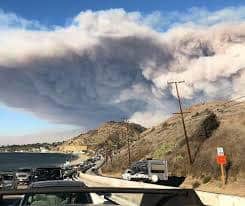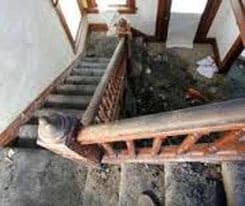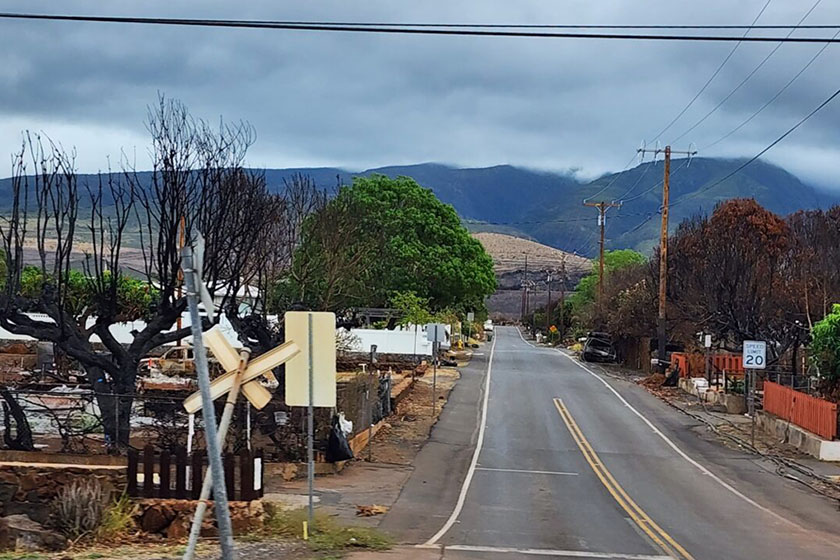 Secondary Wildfire Smoke – The Toll On People and Property
Secondary Wildfire Smoke – The Toll On People and Property
The recent Camp Fire and Woolsey Fire are among the most destructive and deadly wildfires in California history, with nearly 250,000 acres burned, thousands of structures destroyed, and over 90 lives lost. While the damage wrought by the intense heat and flame is undeniable, the smoke generated by these wildfires can also have a significant impact on lives and property.
Smoke generated from wildfires not only contains combustion products of burned vegetation, but residential and commercial structures can release toxic substances from plastic, chemicals, appliances, and building materials when burned. These substances include particulates, carbon monoxide, benzene, dioxin, polycyclic aromatic hydrocarbons (PAHs), formaldehyde, and heavy metals.
The health effects of secondary wildfire smoke can be significant. Vapors and gases contained in smoke can act as irritants, and in high enough concentrations, can be toxic. Particles found in wildfire smoke, typically 2.5 micrometers in size (about 1/40th the width of a strand of hair), can penetrate deep into the lungs and enter the bloodstream. Children, older adults, and people with asthma, lung, or heart disease are most susceptible, but anyone can be affected.
Short-term effects from smoke exposure include burning eyes, coughing, difficulty breathing, and worsening of symptoms in those with lung or heart disease. With regard to long-term effects, healthy individuals most likely have little risk from short-term exposures. Chronic, long-term exposure effects are being studied, but there could be increased risks even for healthy people. For example, recent estimates equate spending a day in the City of San Francisco, which is experiencing massive smoke-related pollution, to smoking 10 cigarettes.
Some of the things that you can do to minimize exposure to wildfire smoke include:
- Minimize outdoor activity as much as possible during smoky conditions.
- Keep windows closed and run the air conditioner, closing any vents that would draw polluted air from the outside.
- Consider a HEPA air purifier to remove pollutants that have migrated indoors.
- If you must go outside during heavily polluted conditions, wear a N95 disposable respirator. Typical dust or surgical masks should not be used, as they will do little to prevent the inhalation of the fine particulates generated during a wildfire.
- Minimize indoor air pollution by refraining from the use of aerosol cleaning products or engaging in dust producing activities such as vacuuming.
If your home or commercial property has been damaged by wildfire smoke, the first thing you should do is contact your insurance company to ascertain your level of coverage. Insurance companies will often cover testing, decontamination, and repair to structures that have been affected by both the fire itself and secondary wildfire smoke.
Smoke can damage property in a variety of ways. Ash and soot in the smoke can stain or discolor ceilings, walls, floors, furniture, and appliances. Vapors and toxic gases can permeate carpets, drapes, upholstered furniture, and clothing, leaving residual odors. Smoke particulates can even become trapped in home and commercial HVAC systems, releasing odors and toxic compounds when in use.
Gold Health and Safety has conducted numerous assessments for damage from secondary wildfire smoke. Our clients include insurance companies, property management firms, building owners, attorneys, public adjusters, and individual homeowners. We adhere to the American Industrial Hygiene Association (AIHA) guidelines for secondary wildfire smoke damage assessment. Our services include both air and surface samples for smoke residues. All assessment and sampling is conducted under the direction of an ABIH Certified Industrial Hygienist, and samples are analyzed by independent AIHA certified laboratories.
Whether you need assistance with the assessment and documentation of secondary wildfire smoke damage to a residence or commercial building, or are concerned with the health effects of smoke exposure, please contact Gold Health and Safety to discuss our services and pricing. We are always here to help!






